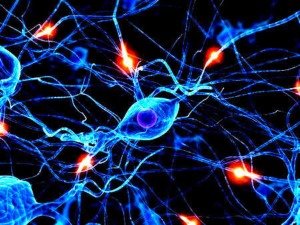Alzheimer’s Disease (AD) is a chronic neurodegenerative disease characterized by memory and cognitive function impairment. In recent decades, the prevalence of AD has risen significantly. It may have a considerable effect and obstacles on the well-being and the ability to lead a healthy life of the affected patients.
The excessive accumulation of β-amyloid protein (Aβ) in the cerebral cortex and hippocampus is one of AD’s main features. Aβ contributes to oxidative stress production by forming reactive oxygen and nitrogen species. Many adverse effects are related to oxidative stress production, including the formation of neurofibrillary tangles, inflammation, apoptosis, protein oxidation, and lipid peroxidation. As a result of these disturbances, a reduction in cognitive functions can be developed in response to the significant damage to neural connections between the cerebral cortex and the hippocampus.
Many researchers have proposed antioxidant supplementation to prevent oxidative stress’ adverse effects by enhancing the endogenous oxidative defense. Previous studies have demonstrated the potential effective role that astaxanthin might have in the management of AD. Astaxanthin has significantly enhanced spatial and non-spatial memory and reduced neurodegeneration, assessed by the object recognition test and Aβ plaque level. It was thought that astaxanthin might improve GPx activity, which was observed to be suppressed due to mitochondrial dysfunction and Aβ accumulation.
Moreover, astaxanthin participates in reducing protein carbonyl and malondialdehyde (MDA) levels, resulting from the destruction of polyunsaturated fatty acids by the reactive oxygen species (ROS) and inducing neuronal deterioration. Likewise, the role of astaxanthin in the elimination of superoxide anion has been reported. In AD, many reports have linked ROS production and neuronal death due to the formation of senile plaques.
Compared to the vehicle-AD group, it has demonstrated a significant reduction in hippocampal and cortical neuronal loss in the oral astaxanthin group. After applying astaxanthin, the cognitive abilities were improved by reducing neuroinflammation and the related oxidative distress, which is a major cause that can inaugurate the mechanism and impact the prognosis of AD.
A study has shown that the number of references and working memory errors has significantly reduced in the group treated with astaxanthin. Moreover, Astaxanthin has improved the behavior, reduced the hippocampal and cortical Aβ numbers, and decreased the soluble and insoluble Aβ 40 and Aβ 42 levels. These changes were accompanied by a significant elevation in the level of superoxide dismutase (SOD) and a significant decline in the nitric oxide (NO) and nitric oxide synthase (NOS) levels. Also, it was reported that astaxanthin might induce a significant suppression of p-Tau expression; however, it did not affect the regulation of p-GSK-3β expression.
Astaxanthin possesses a powerful anti-inflammatory activity that abolishes the expression of inflammatory mediators, including TNF-α, PGE2, and IL-1β, and inhibits the development of nitric oxide (NO) as well as the NF-κB-dependent signaling pathway.
Other studies have described similar anti-inflammatory effects of astaxanthin via using different laboratory models. Astaxanthin, at a dose of 50 μM, declined the release of inflammatory mediators in activated microglial (BV-2 cell line) cells via the regulation of NF-κB cascade factors (e.g., p-IKKα, p-IκBα, and p-NF-κB p65, IL-6, and MAPK).
In terms of cytokines, astaxanthin subretinally reduced the level of TNF-α but not IL-1β. Furthermore, astaxanthin has been reported to be effective in terms of apoptosis suppression, as it suppresses the expression of caspase-9 and caspase-3 proteins. The favorable effects of astaxanthin in decreasing any potentially present oxidative stress are owed to the capability to pass the blood-brain barrier, enabling it to perform its favorable effects. The exact mechanism explaining the anti-inflammatory actions of astaxanthin is not well understood.
However, many studies have reported some observations that might help understand it. A previous investigation said that astaxanthin significantly reduced oxidative stress and the present ischemia, which occurred secondary to brain injury. Via the ERK1/2 pathway, astaxanthin also induced the expression of the Ho-1 enzyme (which has antioxidant properties), reducing cell death and protecting neuroblastoma cells that were susceptible to injury. The favorable effects of astaxanthin showed the neuroprotective role that this compound plays in the hippocampal HT22 cells of their mice by increasing the expression of Ho-1 antioxidant activities.
Another mechanism for enhancing the cognitive ability with AD is the inhibition of glutathione-induced cell death, which has been previously reported to take part in the prognosis and AD severity.
Moreover, astaxanthin demonstrated the protective effects on mitochondria’s double membrane system by boosting efficient energy production. Specifically, astaxanthin protected the mitochondria of cultured nerve cells from toxic attacks and increased mitochondrial activity through enhanced oxygen consumption without increased reactive oxygen species production, indicating its potential efficacy in the management and possible prevention of neurodegenerative diseases and neuroinflammation.
More findings indicated that astaxanthin significantly reduced the Aβ42 deposition, p-Tau, and Iba1 fraction. On the other hand, it increased glutathione biosynthesis, increasing the hippocampal parvalbumin-positive-positive neuron density, which plays a significant role in gamma oscillation production.
According to a recent study, gamma oscillations’ optogenetic or sensory activation led to the decline of Aβ peptides in the hippocampus of the AD mouse model (5XFAD mouse) due to microglial activation and the resulting increase in Aβ microglial uptake. A reduction in the Iba1 fraction may be attributed to reducing Aβ42 precipitation in astaxanthin-fed AppNL-G-F mice as microglia accumulate around Aβ deposition.
Regarding the effect of astaxanthin on p-Tau, two pathways were suggested: the amyloid cascade theory and the autophagy-mediated degradation. The p-Tau fraction was positively correlated with the Aβ42 fraction, supporting the amyloid cascade theory. The promotion of nuclear factor erythroid 2-related factor 2 (Nrf2)/antioxidant response element (ARE) by astaxanthin, resulting in reducing p-Tau, suggested the effect of astaxanthin on autophagy.
In AD-like model rats, which were induced using hydrated aluminum chloride (AlCl3.6H2O) solution, astaxanthin significantly reduced the disposition of Aβ1-42, the level of MDA, and the activity of acetylcholinesterase and monoamine oxidase, and the expression of β-site amyloid precursor protein cleaving enzyme 1 (BACE1). Moreover, astaxanthin significantly elevated the miRNA-124 expression, Nrf2 upregulation, and the content of serotonin and acetylcholine.

Leave A Comment